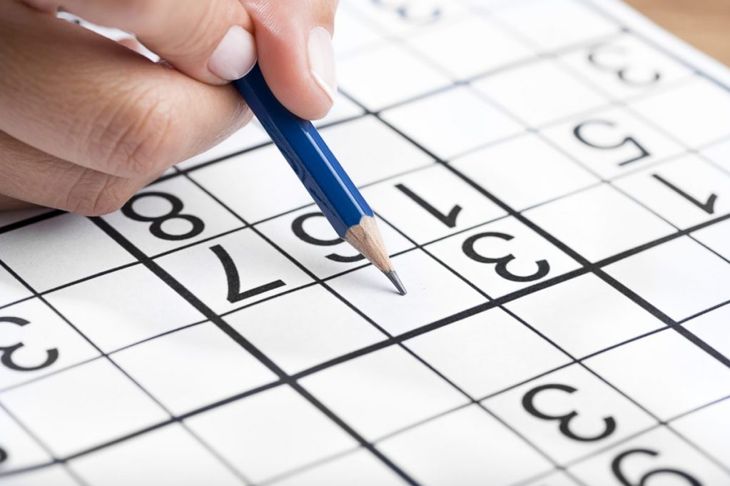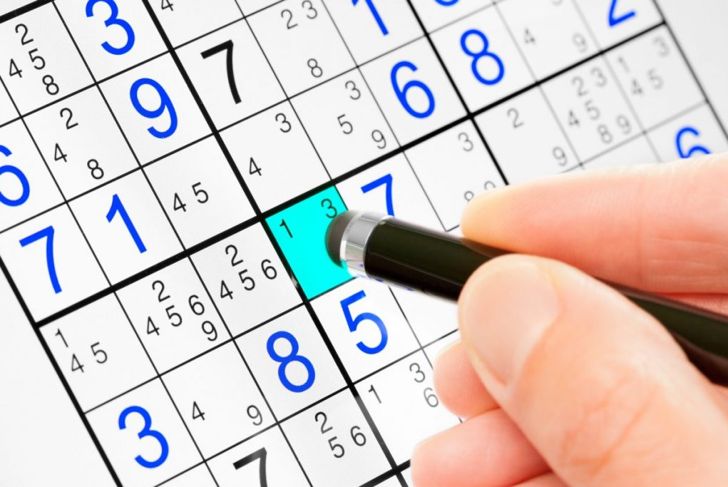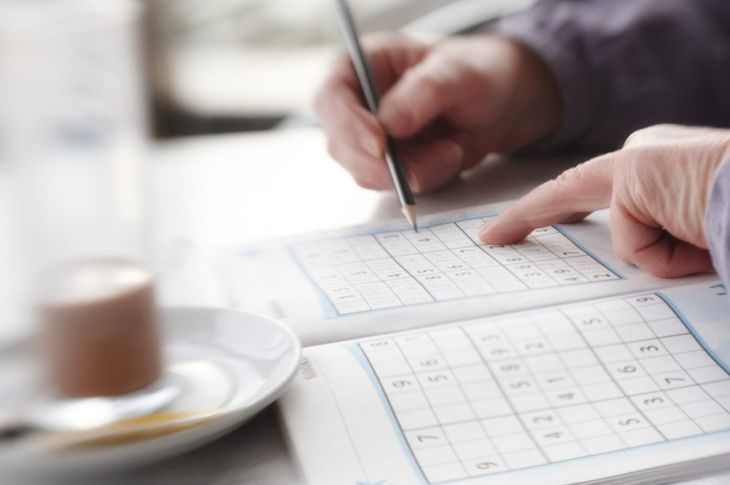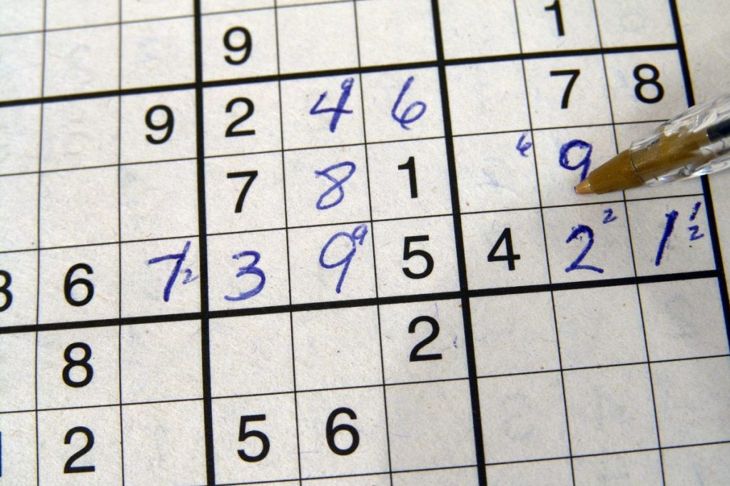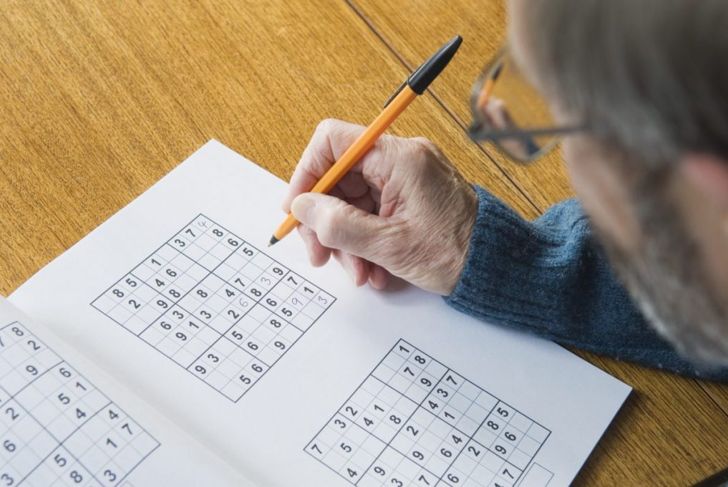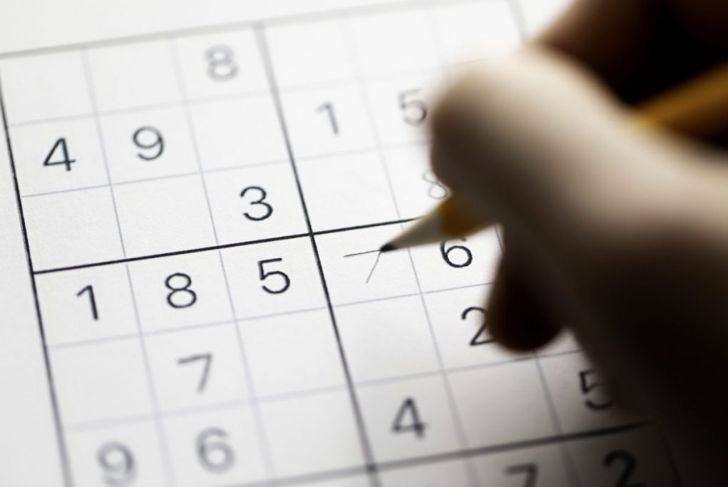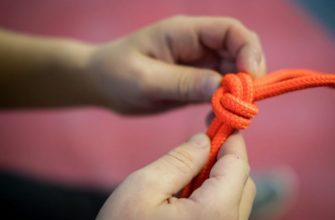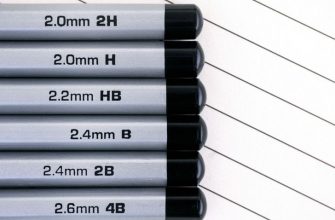Modern Sudoku became mainstream in the 1980s and remains one of the most popular logic puzzles in the world. A Sudoku grid begins with some numbers present and many missing. To solve the puzzle, the player must use their logic and reasoning skills to fill in the blank spaces. There are many difficulties available, so beginners and experts alike can enjoy Sudoku. Easier puzzles will have fewer blank spaces while harder puzzles will have significantly more.
Board and Basics
The most common Sudoku board is a 9×9 grid with 3×3 regions. This creates nine large squares, which also contain nine squares. To solve a Sudoku puzzle, the player must make sure that each row, column, and region have a complete set of the numbers one through nine. Additionally, a number can’t exist twice in a row, column, or region. Numbers that are already present at the beginning of the puzzle are “givens.” These numbers are static and help you solve the puzzle.
Preparing to Play
When playing Sudoku, most people recommend using a pencil. Because it is incredibly difficult to fill a Sudoku grid the first time through flawlessly, it’s better to be able to erase your markings. Alternatively, some players like to keep a blank Sudoku grid where each box lists the number candidates. This allows them to more easily remember their possible answers and mark them off as they go. Additionally, these grids make it significantly easier to see numbers that are absolutely correct. There are mobile and computer versions of Sudoku that include these features as well.
Pencil in Possibilities
Very few people will pencil in their answer as a full-sized number. Instead, they will place possibilities along the edges of the box they’re solving. This allows them to visit other boxes while remembering what their answers could be. It also enables many of the more complex Sudoku techniques. However, using a pen or penciling in a full-sized number is a fun and interesting way to challenge yourself as you progress through the Sudoku difficulty levels.
Find the Easy Play
One of the best things to do when sitting down to play Sudoku is to look for the easy answers. Especially in beginner level Sudoku puzzles, there are often rows, columns, or regions that have all but one or two numbers as givens. By filling these in first, you’ll have a much easier time filling in the missing numbers. If a section has only a couple of missing numbers, you can often guess which number goes where with a simple glance along the rows or columns that feed into it.
Scanning the Board
There are many different techniques for solving Sudoku. The most beginner-friendly and the one most people use naturally is scanning the board. All it takes is looking across each row and each column and determine if any missing numbers are obvious or easy to answer. One of the best ways to start this is by looking at which given numbers are the most prevalent. For example, if there are more fours than any other number, filling in the remaining fours is significantly easier.
Naked and Hidden Pairs
Eventually, the scanning methods won’t be enough. This is where the other techniques come into play. Expert Sudoku solvers will look for “naked pairs.” These are two identical candidates in two boxes of a particular row, column, or region. If those numbers appear in any other competing box, you can eliminate them as possibilities from those competing boxes. For example, if a region has two boxes that both have four and seven as candidates, no connecting row or column can have those answers. This is because of the rules where each row, column, and region must have a full set of numbers. That region needs the four or seven. In some cases, the boxes with the naked pairs have other candidates as well. These are “hidden pairs.”
Naked and Hidden Triples
An extension of the naked and hidden pairs rule is looking for naked and hidden triples. These follow the same concept as the pairs rule, but with three boxes and numbers instead. However, unlike the pairs rule, all three numbers don’t need to be in all three boxes. For example, there are three boxes in a row. One box has a possibility of five and nine, one could be six or nine, and the last could be five or nine. Because of this, you can remove five, six, and nine as possibilities from each other box in this row. This will create naked pairs in those boxes.
Naked and Hidden Quads
Beyond the triples rule is the quads rule. This is a much more complex rule but is usually necessary for harder Sudoku puzzles. Naked quads are similar to naked triples, but with four boxes that have four candidates in a row, column, or region. As an example:
- One box could be five, six, or eight
- One box could be six or eight
- One box could be three or five
- One box could be three, five, or six
The four candidates are three, five, six, and eight. Because of this, you’re able to eliminate those numbers as candidates from every other box in the column. Hidden quads are rare and occur exclusively in the most difficult puzzles.
Keep Moving
One of the mistakes that most people make when they are solving a Sudoku puzzle is that they get stuck on answering one particular box. It’s important to constantly move on. If you’re having difficulty figuring out a box, it’s probably because you haven’t solved enough of the other boxes. Additionally, by constantly switching targets, you’re keeping your mind fresh and focused. This will allow you to avoid easy mistakes.
Constantly Evaluate and Correct
Every time you place a number in a box, evaluate yourself. Ask yourself some questions.
- Did you do that correctly?
- What changed in that box’s row, column, or region?
- How does that number affect the neighboring boxes?
Placing a number always opens opportunities for placing other numbers. Towards the end of a puzzle, you’ll notice yourself being able to fill in several boxes at a time. This is one of the most satisfying parts of Sudoku, and it keeps people coming back.

 Home
Home Health
Health Diet & Nutrition
Diet & Nutrition Living Well
Living Well More
More
